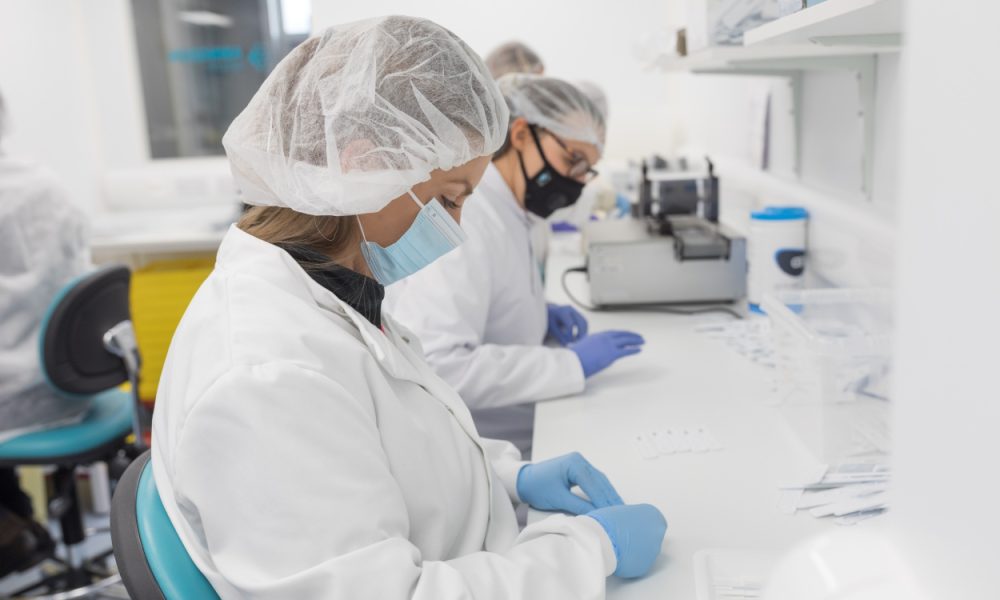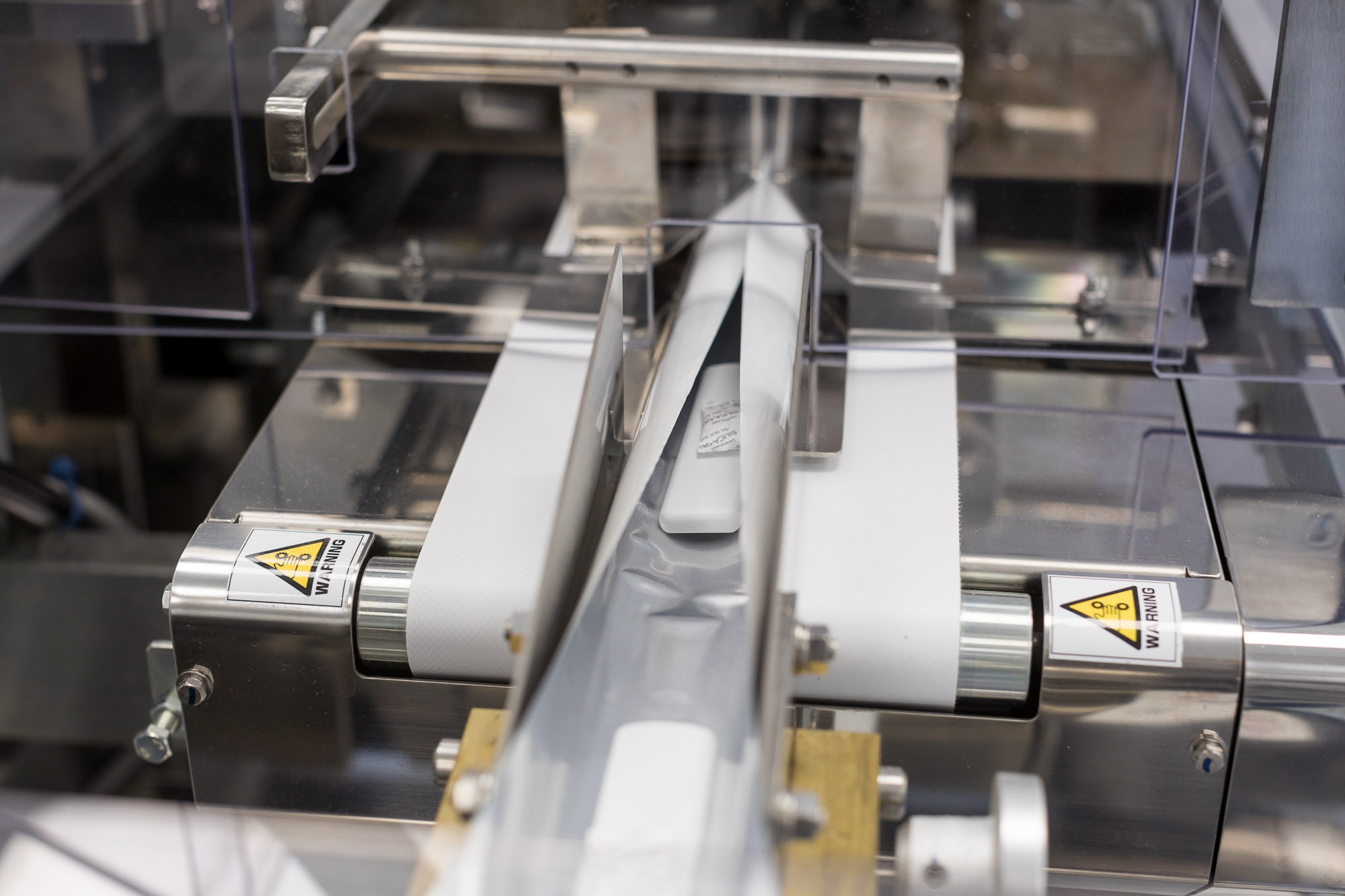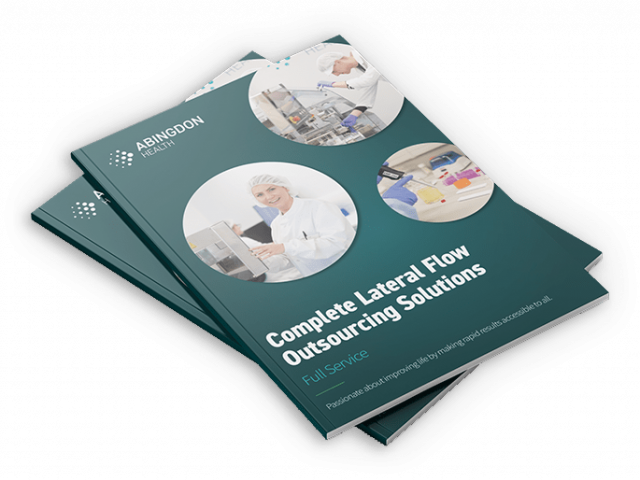Lateral Flow Test Development: Key Process Milestones Explained

Key Phases of LFT Development
Feasability
Optimisation
Scale Up
Technical Transfer
Key Takeaway
In our latest blog Abingdon Health’s CTO Nina Garrett looks to demystify the lateral flow test development process. As a leading CRO and CDMO, Abingdon Health has a tried and tested approach to immunoassay development, transfer and manufacturing activities.
As with many industries the lateral flow market has its own set of terms and acronyms that can get in the way of understanding the process that Abingdon Health undertakes to support bringing products to markets on behalf of its customers.
In this blog Nina outlines these key steps and highlights Abingdon’s approach to development which – as an integrated contract research organisation (CRO) and contract development and manufacturing organisation (CDMO) – is focused on developing robust scalable products that meet user requirements.
In essence the development process is broken down into the following steps which we will address in turn:
- Feasibility
- Optimisation
- Scale Up
- Technical Transfer
Feasibility:
This is the key foundation for any successful development, also often referred to as the Proof of Concept phase. Abingdon’s approach from day one is to focus on ‘design for manufacture’ and ‘design for the user’. Strategic decisions made at the start of any development process will have far reaching effects later down the line, so it is important to get them right. Additionally, having the specifications for the project defined and agreed is critical to ensuring that we develop a product with the required performance for the end user. At Abingdon these specifications are defined at the outset of the development program in our Product Requirement Specification form.
Another important area is identifying the right reagents and components. This is not just a matter of performance, but also of scalability and cost effectiveness. At Abingdon we incorporate our supply chain team into the development process from an early stage.
Ultimately the key milestone of feasibility is to complete a successful design review stage gate; with the output of the feasibility phase being a working prototype that in broad terms meets the performance requirements set out in the Product Requirement Specification.
Optimisation:
Once we have a working prototype and have passed Proof of Concept, we move into the Optimisation phase. The name gives a clue: we effectively use the prototype device and through further analysis and testing we look to refine its performance. We look at every aspect of the product from the nitrocellulose membrane, sample pads, reagents, the housings and all the ancillary components. We identify a specific a set of component parameters and we build the key processes and methods that provide optimal performance for the assay.
Additionally, the test quality control (QC) sample panel and QC panel specifications are established, which will be used as the quality control method in Technical Transfer and in routine production.
Abingdon follow a tried and tested, process-led approach under our Quality Management System (QMS) and we also bring to each New Product Development process our experience of using many of the components on multiple test development programs to reach a successful outcome – again, as initially defined in the Product Requirement Specification.
Scale Up:
This step involves transferring the processes from the bench to the large-scale manufacturing equipment. At Abingdon we look to ensure the decisions made during the Feasibility and Optimisation phases will result in a low-risk manufacturing process; as we mentioned at the start, our approach from day one is to “design for manufacture”. Additionally, in this phase manufacturing and QC documentation is drafted ready for use in the pilot batch preparation; another essential aspect of this phase.

One of the key differentiating factors of working with an integrated lateral flow CRO and CDMO such as Abingdon Health is that we are fully focused on developing a manufacturable device. The key milestone at the end of the Scale Up phase is the production and testing of the pilot batch. This is typically a batch of 1,000 to 5,000 devices which is produced on large scale equipment, and the successful completion of this phase paves the way for the formal Design Freeze of the development program. At Design Freeze all of the test manufacturing parameters, processes and QC specifications are locked in.
Technical Transfer:
The fourth stage is the Technical Transfer (TT) phase and this involves the production of three independent batches of tests, typically of increasing scale, with the third batch being at the routine manufacturing batch size.
The necessary objectives of this stage are to ensure the manufacturing process is robust, and
that all three batches produce consistent results. The key milestone here is a pre-launch review and successful completion of this stage means that the product has formally transferred to manufacture.
These Technical Transfer batches are also critical in performing the other steps that may be required before commercialisation of the assay. The TT batches will be used in clinical trials, formal stability studies and analytical testing, all of which will provide essential data; for example, to allow regulatory submissions for approval.
Key Takeaway
The main objective of the development process is to deliver a product that meets the Customer’s requirements and, importantly, is designed for manufacture and for the user.
Abingdon’s process-led approach ensures that the product development progresses as milestones are hit. This ensures that as we move through the phases, the development risk reduces and we are continually referring back to the essential and desirable objectives set out in the Product Requirement Specification produced at the outset of the project.
For more information on how Abingdon support your product’s journey from idea to commercial success please contact Contact a member of our team to discuss this subject in confidence.

